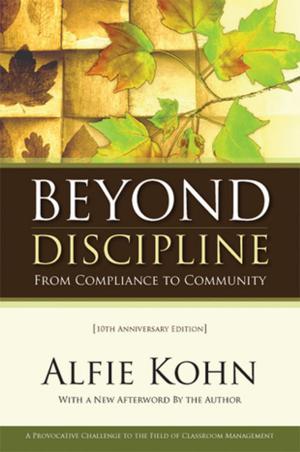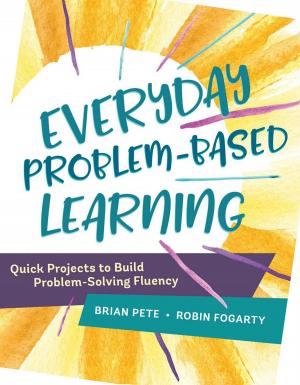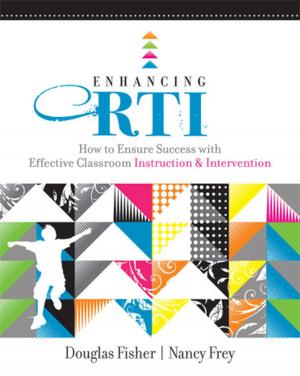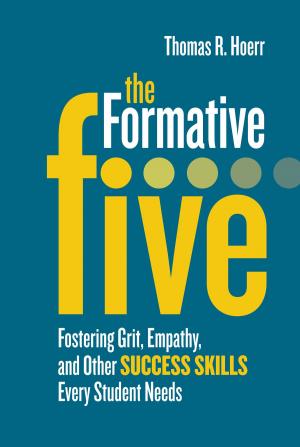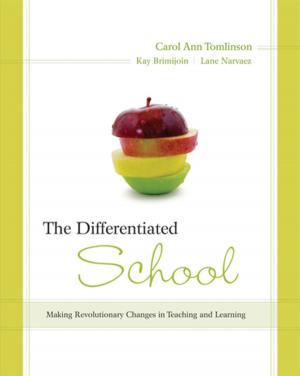How to Create a Culture of Achievement in Your School and Classroom
Nonfiction, Reference & Language, Education & Teaching, Teaching, Teaching Methods| Author: | Douglas Fisher, Nancy Frey, Ian Pumpian | ISBN: | 9781416614579 |
| Publisher: | ASCD | Publication: | April 26, 2012 |
| Imprint: | ASCD | Language: | English |
| Author: | Douglas Fisher, Nancy Frey, Ian Pumpian |
| ISBN: | 9781416614579 |
| Publisher: | ASCD |
| Publication: | April 26, 2012 |
| Imprint: | ASCD |
| Language: | English |
What does it feel like to walk into your school? Is it a welcoming place, where everyone feels valued? Most school improvement efforts focus on academic goals, instructional models, curriculum, and assessments. But sometimes what can make or break your learning community are the intangibles--the relationships, identity, and connections that make up its culture. Authors Fisher, Frey, and Pumpian believe that no school improvement effort will be effective unless school culture is addressed. They identify five pillars that are critical to building a culture of achievement: 1. Welcome: Imagine if all staff members in your school considered it their job to make every student, parent, and visitor feel noticed, welcomed, and valued. 2. Do no harm: Your school rules should be tools for teaching students to become the moral and ethical citizens you expect them to be. 3. Choice words: When the language students hear helps them tell a story about themselves that is one of possibility and potential, students perform in ways that are consistent with that belief. 4. It’s never too late to learn: Can you push students to go beyond the minimum needed to get by, to discover what they are capable of achieving? 5. Best school in the universe: Is your school the best place to teach and learn? The best place to work? Drawing on their years of experience in the classroom, the authors explain how these pillars support good teaching and learning. In addition, they provide 19 action research tools that will help you create a culture of achievement, so that your school or classroom is the best it can be. After reading this book, you’ll see why culture makes the difference between a school that enables success for all students and a school that merely houses those students during the school day.
What does it feel like to walk into your school? Is it a welcoming place, where everyone feels valued? Most school improvement efforts focus on academic goals, instructional models, curriculum, and assessments. But sometimes what can make or break your learning community are the intangibles--the relationships, identity, and connections that make up its culture. Authors Fisher, Frey, and Pumpian believe that no school improvement effort will be effective unless school culture is addressed. They identify five pillars that are critical to building a culture of achievement: 1. Welcome: Imagine if all staff members in your school considered it their job to make every student, parent, and visitor feel noticed, welcomed, and valued. 2. Do no harm: Your school rules should be tools for teaching students to become the moral and ethical citizens you expect them to be. 3. Choice words: When the language students hear helps them tell a story about themselves that is one of possibility and potential, students perform in ways that are consistent with that belief. 4. It’s never too late to learn: Can you push students to go beyond the minimum needed to get by, to discover what they are capable of achieving? 5. Best school in the universe: Is your school the best place to teach and learn? The best place to work? Drawing on their years of experience in the classroom, the authors explain how these pillars support good teaching and learning. In addition, they provide 19 action research tools that will help you create a culture of achievement, so that your school or classroom is the best it can be. After reading this book, you’ll see why culture makes the difference between a school that enables success for all students and a school that merely houses those students during the school day.




